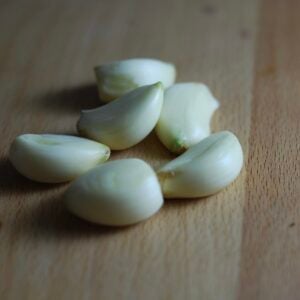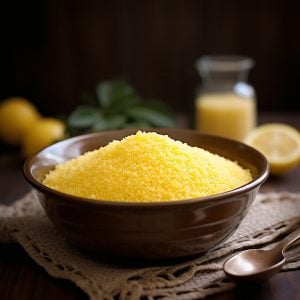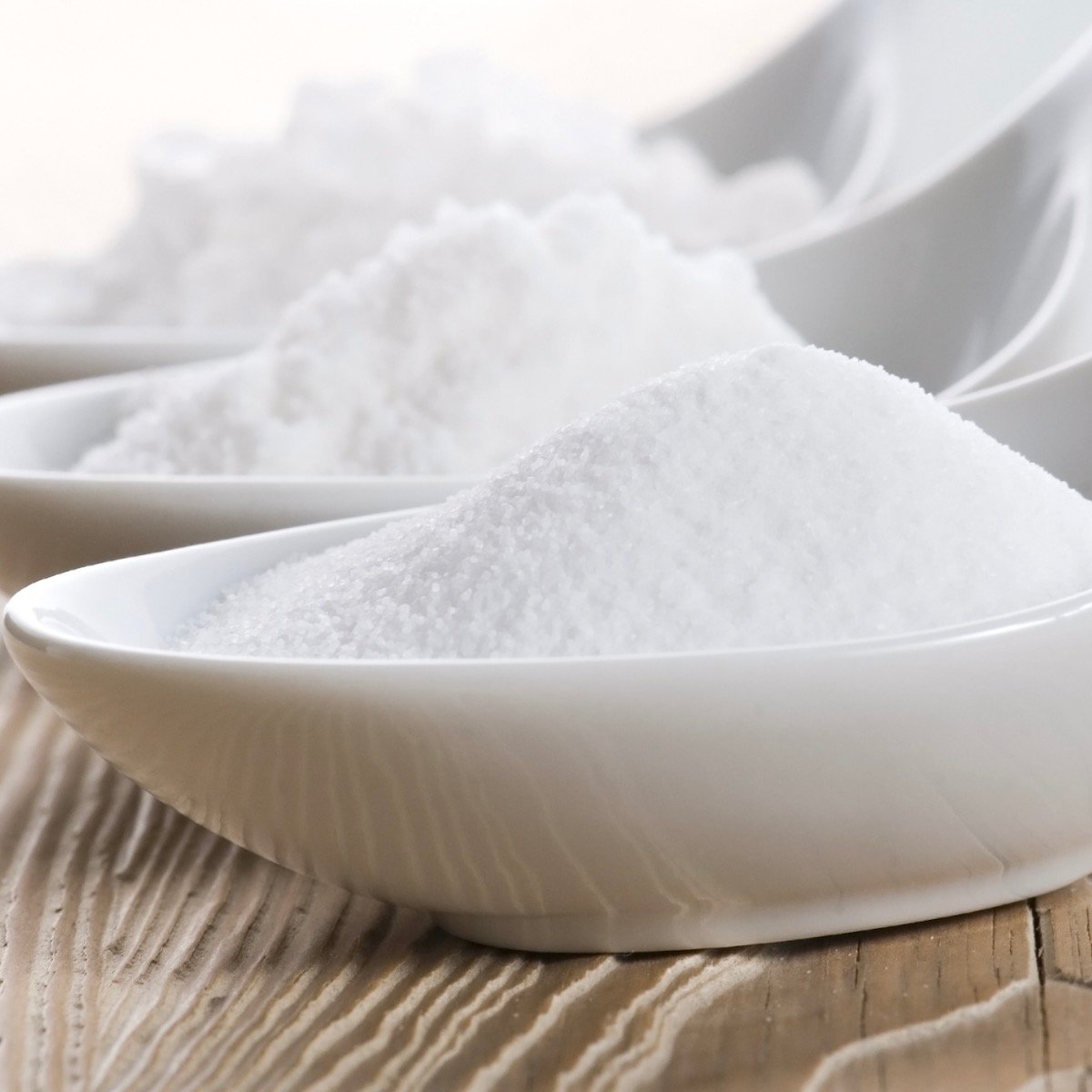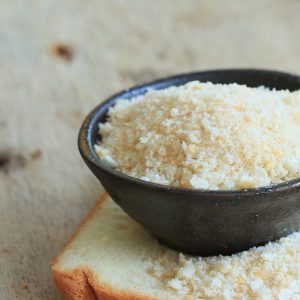All About Olive Oil
Olive oil is one of the essential ingredients in my kitchen. I have a variety of versions, including pure, virgin, and extra-virgin, on hand for different cooking purposes and I would like to tell you about each.
When I was in Tuscany, Italy, with my family on vacation, I asked people I met about olive oil and I was surprised when I learned most Tuscans had never heard about pure olive oil. They only know extra virgin because there are olive trees everywhere.
If you have a plot of land, you’ll likely have olive trees on your property. At harvest time, someone comes by, picks your olives, brings them to one of the few local presses, and produces your olive oil for the year.
Classifications of Olive Oil
The acidity level, the method of production, and the quality of the olives determine several classifications of olive oil. The main classifications are:
- Extra Virgin Olive Oil: This is the highest-quality and most expensive olive oil. It is made from pure, cold-pressed olives and has no more than 0.8% acidity. It is considered the healthiest olive oil as it retains most of its natural antioxidants and anti-inflammatory properties. Extra-virgin olive oil is characterized by a fruity aroma, a green color, and a slightly bitter and peppery taste.
- Virgin Olive Oil: Virgin olive oil is also made from pure, cold-pressed olives but has a slightly higher acidity level (up to 2%) than extra-virgin olive oil. As a result, it has a similar fruity aroma and green color but a less intense flavor and aroma than extra-virgin olive oil.
- Pure Olive Oil: This is a blend of virgin and refined olive oil. It is made from cold-pressed and processed olives and has a milder flavor and aroma than virgin olive oil. It has an acidity level of no more than 1%.
- Olive Oil: This is a blend of pure and refined olive oil. It has a milder flavor and aroma than pure olive oil and is often used for cooking and frying. It has an acidity level of no more than 1.5%.
- Refined Olive Oil: This is made from lower-quality olives treated with chemicals and heat to remove impurities. It has a very mild flavor and aroma and is often used for high-heat cooking.
It’s worth noting that “light” or “lite” olive oil is not a classification; it’s a marketing term that refers to the color or taste rather than the quality of the oil.
What Makes One Olive Oil Better Than the Next?
Several factors determine the quality of olive oil, including the type of olives used, the region where the olives are grown, the method of harvesting and extraction, and the age of the oil.
- Type of olives: The type of olives used to make the oil can affect the flavor and quality of the oil. Some of the most highly-regarded olive oils are made from a blend of different varieties, such as the Tuscan blend of Frantoio, Leccino and Moraiolo olives.
- Region: The region where the olives are grown can also affect the flavor and quality of the oil. Olive oils from Italy, Spain, and Greece are considered some of the best in the world.
- Harvesting and extraction: The method of harvesting and extraction also plays a role in the quality of the oil. Olives that are hand-picked and cold-pressed are generally considered to be of higher quality than those that are machine-harvested or treated with heat or chemicals.
- Age: Freshly pressed olive oil is considered the best quality and has the most delicate flavor and aroma, as the oil will start to degrade over time and lose its delicate flavors and aromas.
- Certification: Quality olive oil should be certified; look for certifications like DOP (Protected Designation of Origin) or IGP (Protected Geographical Indication), which guarantees that the olive oil was produced in a specific region using specific methods and meets certain standards.
Extra Virgin Olive oil is considered the highest quality and has the most delicate flavor and aroma. It is made from pure, cold-pressed olives and contains no more than 0.8% acidity. It is also the healthiest olive oil as it retains most of its natural antioxidants and anti-inflammatory properties.
What Variety of Olives Are Used For Making Olive Oil?
The quality of olive oil can depend on several factors, including the variety of olives used, the growing conditions, and the methods used for harvesting and pressing the olives. However, some of the most highly regarded varieties for making olive oil include:
- Koroneiki: This small Greek olive produces a high-quality oil with a fruity, slightly bitter, and pungent taste.
- Arbequina: This small Spanish olive produces a mild, fruity oil with a nutty finish.
- Picual: This Spanish olive is known for its fruity aroma and slightly bitter, pungent flavor.
- Manzanilla: This Spanish olive is known for its mild and fruity oil with a slightly bitter aftertaste.
- Hojiblanca: This Spanish olive is known for its fruity and slightly bitter oil with a nutty finish.
- Leccino: This Italian olive is known for its mild, fruity, and slightly bitter oil with a nutty finish.
- Itrana: this Italian olive is known for its fruity, slightly bitter, and pungent oil.
- Frantoio: This Italian olive is known for its fruity and slightly bitter oil with a strong, pungent flavor.
- Coratina: This Italian olive is known for its fruity and slightly bitter oil with a strong, pungent flavor.
- Pendolino: This Italian olive is known for its fruity and slightly bitter oil with a nutty finish.
It’s important to remember that the taste of olive oil can vary depending on the region, the weather, the harvest method, and the milling process.
How About In Tuscany?
Since our trip to Tuscany, I have been a little partial to Italian olive oils. So everywhere we went, there were olive trees and we were able to visit Oliviera Sant’Angelo, a handcrafted olive mill in Siena, where we learned the process of pressing olives and enjoyed an olive oil tasting.
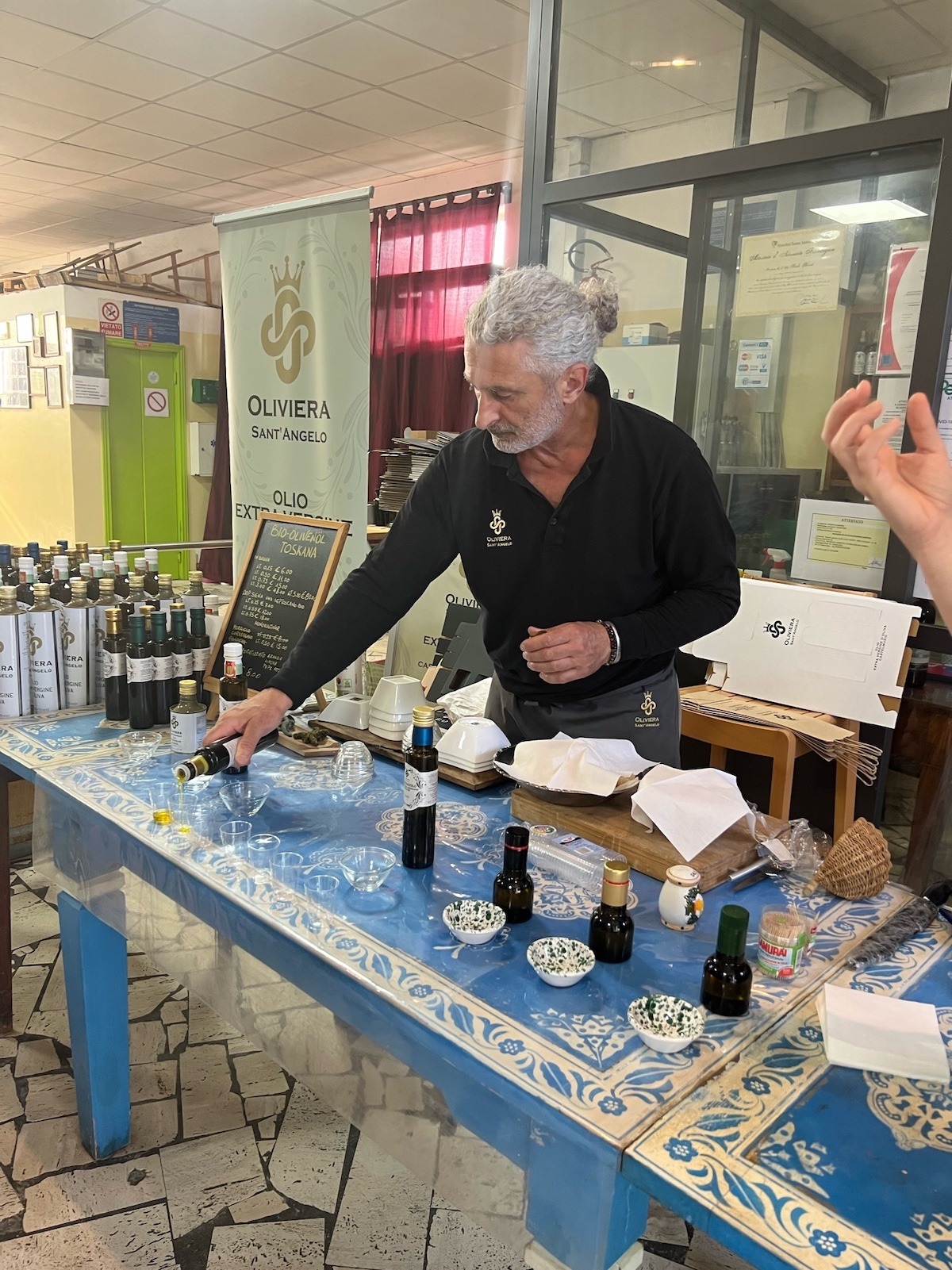 Giorgio Bindi of Oliviera Sant’Angelo Olive Oil Mill
Giorgio Bindi of Oliviera Sant’Angelo Olive Oil Mill
In Tuscany, Italy, the most common olives used for olive oil production are:
- Frantoio: This variety is considered one of the best for olive oil production and it is known for its fruity and slightly bitter flavor with a robust and pungent finish.
- Leccino: This variety is known for its mild, fruity, and slightly bitter flavor with a nutty finish.
- Moraiolo: This variety is known for its fruity and slightly bitter flavor with a strong, pungent finish.
- Correggiolo: This variety is known for its fruity and slightly bitter flavor with a strong, pungent finish.
- Pendolino: This variety is known for its fruity and slightly bitter flavor with a nutty finish.
- Maurino : This variety is known for its fruity and slightly bitter flavor with a nutty finish.
- San Felice : This variety is known for its fruity and slightly bitter flavor with a nutty finish.
These are the most common, but the region has many other varieties. The blend of the varieties is often used to make the oil; it allows one to get the best characteristics of different olives and create a unique taste of the oil.
How Are Olives Harvested?
There are several methods for harvesting olives for olive oil production, each with its advantages and disadvantages. Some of the most popular methods include:
- Hand-picking: This method involves manually picking the olives from the trees using ladders, rakes, or clippers. This is considered the traditional method of harvesting olives and is often used by small-scale, organic, or artisanal producers. Hand-picking allows for more selective harvesting, resulting in a higher-quality oil. However, it is also more labor-intensive and time-consuming.
- Shaking: This method involves using a mechanical shaker to shake the olives off the trees. The olives fall to the ground, where they are collected and processed. This method is more efficient than hand-picking and can reduce labor costs. However, it also increases the risk of damage to the olives and can result in a lower-quality oil.
- Raking: This method involves using a special rake to remove the olives from the trees gently. This method is considered a compromise between hand-picking and shaking, as it is less labor-intensive than hand-picking and less damaging than shaking.
- Vacuum shaking: This method is similar to shaking but uses vacuum suction to remove the olives from the tree gently. This method reduces the risk of damage to the olives and is often used for delicate or older trees.
The timing of the harvest is also crucial for the quality of the oil. Olives should be harvested when they are fully ripe, typically between October and December, depending on the region and the variety of olives.
The Two Most Popular Ways to Press Olives.
There are several ways to press olives for olive oil, but the two most popular methods are:
Cold Pressing
 Cold Press Method
Cold Press Method
Cold pressing olives for olive oil is the traditional production method and is considered the best way to extract the purest and highest quality oil. This method involves mechanically pressing the olives to extract the oil without using heat or chemicals.
The process starts with the olives being washed and cleaned to remove any debris or impurities. They are then crushed using a press, typically a stone mill or a hammer mill. The paste that is produced is spread on mats or in baskets, and then it is pressed. The pressure applied is gentle and the temperature is kept at room temperature. This ensures that the oil is extracted without damaging the oil cells, preserving the olives’ natural flavors, aromas, and nutrients.
The oil extracted from cold pressing is considered the highest quality as it is less processed and has a more natural taste. Cold-pressed oil is also known for its healthy properties. It is rich in antioxidants, vitamins, and minerals, as well as monounsaturated fatty acids, which are considered beneficial for heart health.
The cold-pressed method is not as efficient as other methods as it requires more olives to produce the same quantity of oil, but it is considered higher quality, more healthy, and more sustainable. Therefore, it is a preferred method by artisanal producers and is often used to produce extra-virgin olive oil.
Centrifugation
 Centrifuge Method
Centrifuge Method
Centrifugation is a modern method of extracting olive oil, which separates the oil from the water and solids in the olives. This method is more efficient and can produce a larger oil yield than cold pressing.
Like cold pressing, the process starts with the olives being washed and cleaned to remove any debris or impurities. They are then ground into a paste and mixed with water and chemicals to help release the oil. This mixture is then placed in a centrifuge and spins at high speeds to separate the oil, water, and solids. The oil is collected at the top, while the water and solids are removed at the bottom.
Centrifugation is considered more efficient and faster than cold pressing; it allows for a larger yield of oil. As a result, large-scale producers and industrial olive oil factories often use it. The method also generates less waste and energy than cold pressing, making it more cost-effective and environmentally friendly.
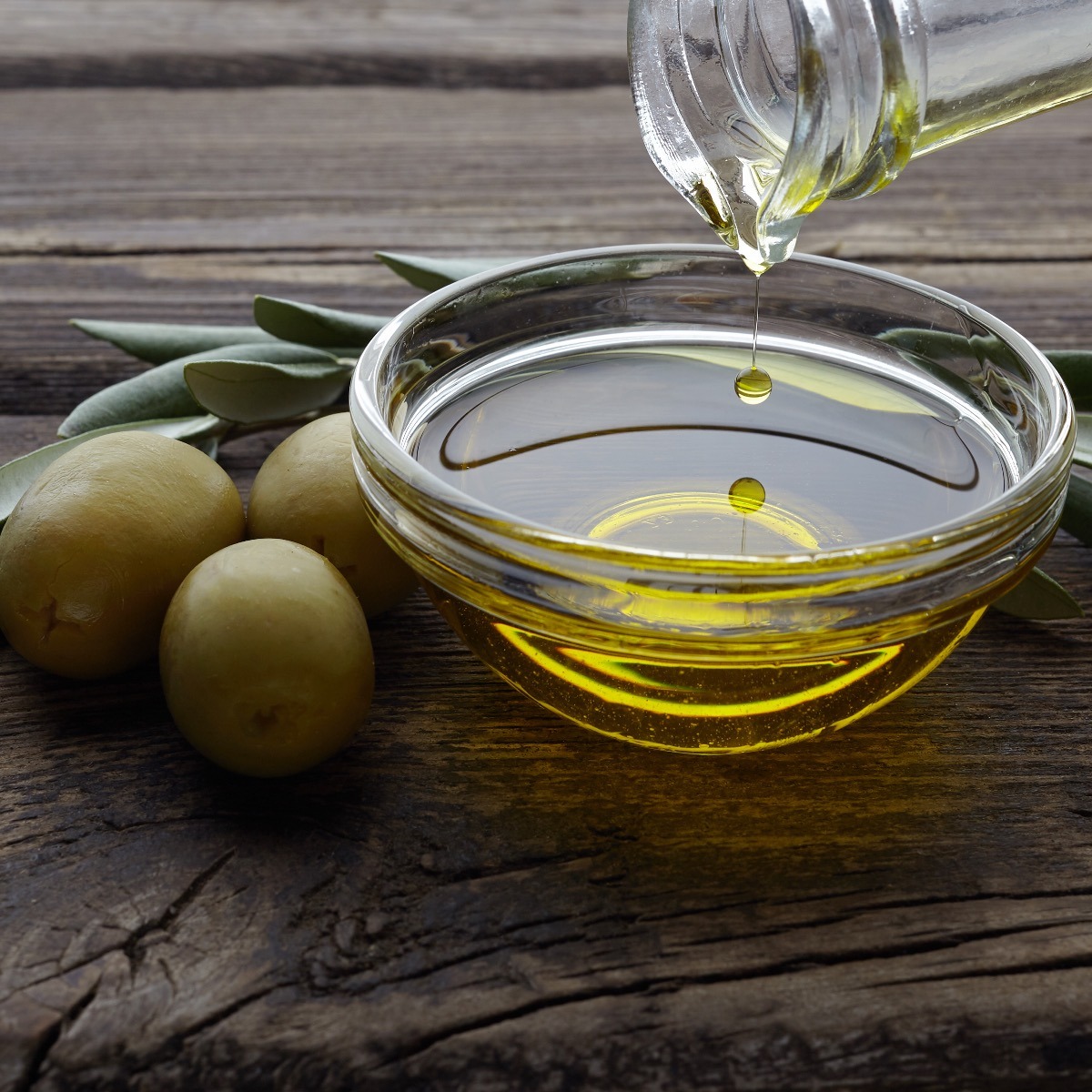
Why Does Fresh Pressed Olive Oil Smell Like Freshly Mown Grass?
Freshly pressed olive oil can have a grassy aroma and flavor because it contains a compound called hexanal. Hexanal is a natural compound in olives and is produced during the crushing and pressing process. It is one of the main contributors to the “freshly mown grass” or “green” aroma and flavor in olive oil.
The grassy aroma and flavor are desirable characteristics of high-quality, extra-virgin olive oil. It is a sign that the oil is made from freshly pressed olives and is of good quality. However, the intensity of the grassy aroma can vary depending on the variety of olives, the ripeness of the olives when harvested, and the pressing method used.
In addition to hexanal, other volatile compounds present in fresh-pressed olive oil can contribute to its unique aroma, such as:
- Esters: contribute to fruity notes
- Aldehydes: contribute to nutty, floral, and spicy notes
- Alcohols: contribute to floral, fruity, and spicy notes
- Ketones: contribute to herbal and fruity notes
It’s worth noting that the grassy aroma will fade as the oil ages, and other aromas and flavors will develop, like nutty, buttery, and spicy notes. However, the oil’s freshness is one of the critical factors determining its quality, so it is essential to consume it within a year of the production date.



